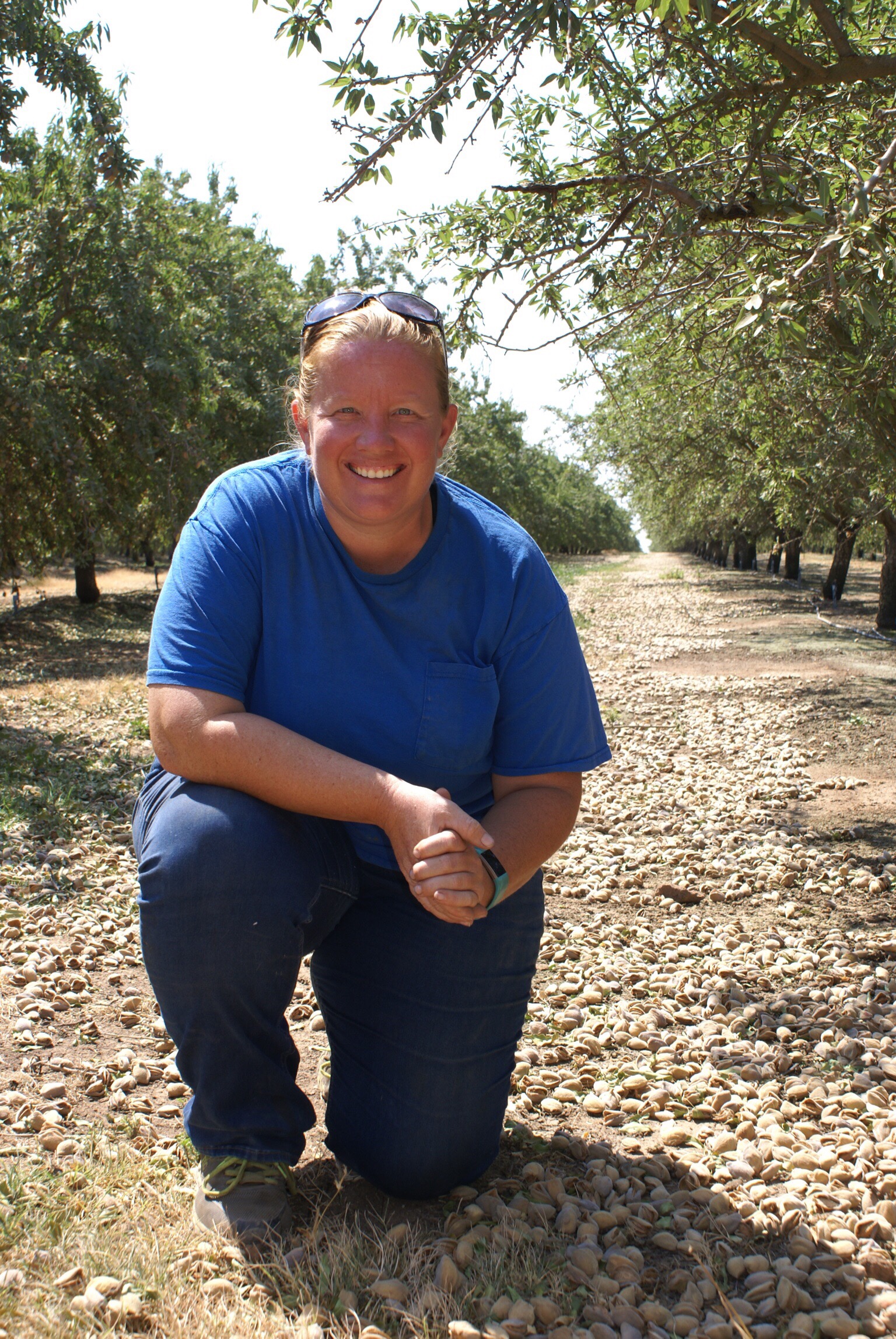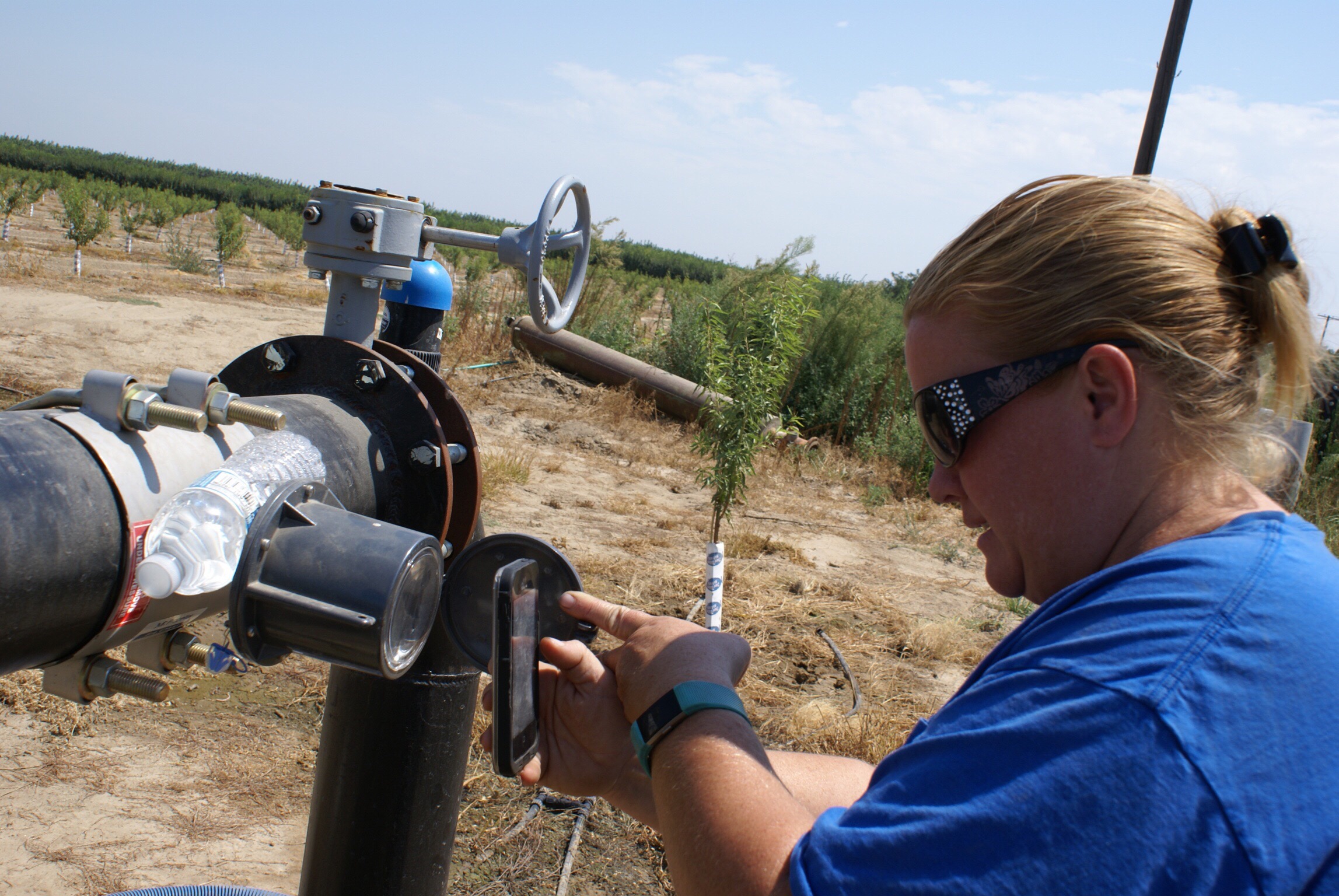
especially with consumers, and says CASP helps the
almond industry tell its story collectively.
Almond grower Jennifer Dickey encourages others in the industry to use sustainability as a tool to share her family’s farming story with consumers
On an average day during almond harvest, Jennifer Dickey can be seen lining up harvest crews, ordering parts for a downed sweeper or fixing a hydraulic line on a box scraper. Dickey knows every square inch of the 200 acres of almonds and walnuts she manages for the family’s CR Orchards in Stanislaus County near Turlock, Calif.
Her parents, Caroline and Randy Dickey are still involved in the farming business, but Jennifer in recent years has taken over most of the daily operations, along with 35 acres she farms on her own nearby and custom farming operations on an additional 200 outside acres. In that time, Dickey has enrolled much of the acreage in the Almond Board’s California Almond Sustainability Program[1], and plans to enroll her newly planted 20-acre block of Independence almonds on double-line drip. Having an intimate understanding of the day-to-day farming operations made entering data into the program’s nine modules relatively easy.
A graduate of Blue Diamond and ABC’s Leadership Programs, Dickey said she enjoys sharing her farming story with others, particularly the urban audience who is not connected to agriculture.
“I love learning and I love public speaking; I think it’s fun,” she said. “But mostly I like telling the story about agriculture. These are your consumers and if you want people to be passionate about what you do, you have to explain it to them.”
Participation in CASP, she said, helps the almond industry collectively tell its story.
“It’s an easy way for farmers to educate people without dealing directly with those people, because the Almond Board can take that information out and educate them for you.”
The recent drought helped illustrate the importance of having data in a time of crisis.
“ABC had proof during that water crisis about what almond growers were doing to implement water conservation,” she said. “The Almond Board has to have facts to back that up and CASP gives those facts to them.”
The California Almond Sustainability Program documents the almond community’s efforts to adopt cost-effective environmentally and socially responsible practices. Confidential information through grower and handler self-assessments of current practices is aggregated for use in communications, education and continuous improvement.

will help Dickey continue to improve sustainability on the
newly planted 20-acre block of Independence almonds.
Dickey estimates it recently took less than half a day to do all nine self-assessment modules on her 15-acre block. The process, she said, helped her reflect on her current practices, compare to other growers in her area and around the state, and find potential areas of improvement.
“I like to read the questions and see what I am doing in comparison to other growers,” Dickey said.
The online CASP system also offers interactive tools, including a nitrogen calculator and mapping tool to develop nitrogen budgets and help meet Nitrogen Management Plan requirements of the Irrigated Lands Regulatory Program. An irrigation calculator also helps develop irrigation schedules on individual blocks.
Dickey regularly relies on pressure chamber readings, collected by a seasonally hired college student, along with flow meters and CIMIS station readings to establish irrigation set timing and duration. Filling out the Energy Use module also helped her better grasp the timing of irrigating during off-peak hours so she could more efficiently run her irrigation pumps.
Completing the Nitrogen Management module on that 15-acre block helped Dickey understand that she could better account for nitrogen inputs by testing her water source and actually reduce the amount of applied N during the season.
“When I went back after filling out the module, I realized I almost over-fertilized on one block because I wasn’t accounting for N in the water source,” she said. “By participating in CASP I learned we could save money and keep excess nitrogen out of the groundwater in the process.”
[1] Sustainable almond farming utilizes production practices that are economically viable and are based upon scientific research, common sense and a respect for the environment, neighbors and employees. The result is a plentiful, nutritious and safe food product.


